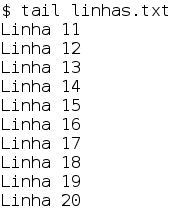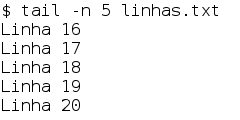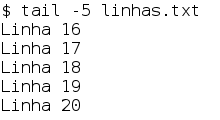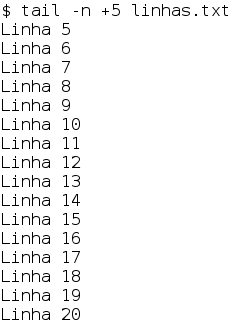Linux Quick Guide: Read the last part of files using tail
The tail command allows you to take a look at the last few lines of a file:
tail [FILE]
Here is an example:

We can see the last 10 lines of the file linhas.txt. This is the default behaviour of the tail command.
If it is desired to read a number of lines other than 10, the -n option can be used to specify the number of lines to output:

Using -n 5 option, tail displays only the last 5 lines from the file.
Learn more.
Most of modern Linux distributions allows you to omit the n when using the -n option.
For example:

Notice that tail -5 has the same effect of tail -n 5.
How to read a file starting with a specified line number.
If we place a + just before the number when using -n option, tail will begin printing from the specified line number:

The previous command tail -n +5 returned the content of file starting with the 5th line.
I use tail this way when I want to remove the header line of a CSV file. When the first line of a CSV file is the header line, I can remove it using tail -n +2 file.csv, which will output the content of file starting with the 2nd line.